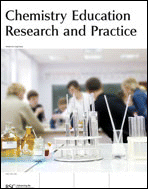A Tiny Adventure: the introduction of problem based learning in an undergraduate chemistry course
Abstract
Year 1 of the chemistry degree at the University of Leicester has been significantly changed by the integration of a problem based learning (PBL) component into the introductory inorganic/physical chemistry module, "Chemical Principles". Small groups of 5-6 students were given a series of problems with real world scenarios and were then given the responsibility of planning, researching and constructing solutions to the problem on a group wiki hosted on the Universty’s Virtual Learning Environment (VLE). The introduction of PBL to the course was evaluated both quantitatively and qualitatively. Class test and exam results were analysed and compared with those achieved in previous years (i.e. before the introduction of PBL). It was found that student performance was at least as good as it had been before the introduction of PBL. Retention figures after PBL had risen sharply (not one PBL student dropped out of the course during the first term). Student and staff feedback was also collected for qualitative analysis of the impact of the change. Combining these findings showed that students appeared to show an improvement in, and recognition of the acquisition of, transferable skills and that group work on immediate arrival at university (representing an opportunity to use social skills within an academic exercise) led to high student retention within the PBL cohort.

 Please wait while we load your content...
Please wait while we load your content...